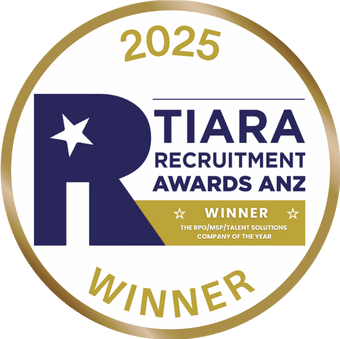We put a few questions to our recruitment teams and 82% of responders found that the time to hire over the last 12 months has increased for many of our clients. Some of our data based on average fill times over the past year also shows there has been at least a 55% increase in time to hire nationally, with this percentage differing for each state.
Currently in the market we are seeing several changes to the candidate mindset and behaviour that could be contributing strongly to these long lead times. We will start this list with the most significant and common factors though all four factors mentioned below are contributing to the current state of the market considerably.
- Multiple offers at a candidate’s disposal, they have more options than ever and can move quicker than the hiring process allows.
- Long hiring processes, clients not acting quick enough to snap up candidates who have multiple options (as mentioned above).
- Candidate shortage, good candidates are not currently moving from their roles or companies so there are also much fewer candidates applying for positions. The reduced number of available Visa holders and candidates not being able to migrate over to Australia as easily as they used to is also contributing to the candidate shortage.
- Higher salary expectations, with few organisations raising salaries.
There were also brief mentions of candidates not returning calls or going through an entire hiring process only to choose higher paying options. As well as more caution being shown from both our candidates and clients.
Given these factors, we have not seen an overwhelming change in hiring practices, with many organisations unaware of what is happening in the market. However, actions we have noticed from some of our clients include:
Trying to offer competitive salaries and paying attention to salary insights (this comment was specific to Engineering and Technical positions).
- Sign on incentives and an increase in bonus frequency
- Flexible work arrangements
- Urging candidates to apply even if they do not meet all the requirements in the job ad
- Trying to create more trust with candidates (i.e., using their own brand name to promote the role and job)
Despite these efforts, there are other organisations not willing to re-evaluate pay rates or make other changes to counteract the current market circumstances.
Our recruitment consultants were able to share some advice for clients on how to ensure they are getting quality candidates without missing out.
Keep an open mind when it comes to candidate suitability and skills requirements
Candidates are coming from all walks of life and may be switching careers, getting back into work after some time, or just graduating. By keeping an open mind with our demographics, we can reach a broader amount of people who have the ability to be upskilled or bring transferrable skills t the role.
Embrace more timely decision-making when it comes to candidates
A major theme during our research was that response times from clients were too long and there were many missed opportunities where candidates were quickly snapped up by other employers. Some faster decision-making skills could be put to good use when it comes to selecting suitable candidates that have been put forward.
Communicate your Employee Value Proposition (EVP)
An EVP can help advertise an organisation to candidates as somewhere great to work that will not only benefit them in terms of income and stability but with other important factors such as work-life balance and employee benefits. Knowing and communicating the benefits you offer can help bring in more and higher quality candidates.
Create a flexible and positive work culture
Another major factor to consider is flexible work. No one who has had a taste of flexible work wants to go back to a stringent work schedule when they know what they are capable of working flexibly. Where it is reasonable for the position, flexible hours and places of work should be implemented.
In addition, a positive work culture is something that not only brings good candidates in but creates a workplace with more engaged employees who are less likely to negatively contribute to staff turnover.
Improved pay rates and salaries
Another element concerning candidates is for employers to be offering competitive or at the least relative salaries or pay rates. It’s important for employers to keep up to date with what the current rates are in the market and to ensure they are not falling below the market averages.
On that note, it’s important that we also share some advice with candidates too.
The General Manager of our Victorian business, Brett Johnson recently shared in an article that candidates should be looking at new roles not only with money as their driving factor, but also considering the long-term circumstances and career goals they have in mind.
Johnson shares, ‘‘Research is now coalescing around looking for a job where you can be paid well, but also something you are good at, something you love, and — if you can — getting to that holy state of doing something the world needs as well.’’
Johnson explains that by looking beyond salary expectations, we can be open to consider other sweeteners that an employer can offer. Not just perks that look good but more like genuine flexible work options and a cohesive, enjoyable team.
‘‘For all the talk around the great resignation, from my perspective it’s more of a great resistance — people resisting those old ways of working,’’ he says. This is in line with a lot of feedback about employers needing to provide flexible work options for roles where it is relevant.
However, if you really are just after a higher salary, experts give some strong advice to not overreach and, just as employers should, be aware of what is happening with current market salaries. They warn against demanding unrealistic raises or threatening to leave for another offer.
Johnson says, ‘‘It’s a good time to be asking for a pay rise, but whatever you do, it has to be reasonable, I think a lot of companies will remember if you hold them to ransom during a time of crisis.’’




















